#Pandalus
Video
youtube
Seniors Bull Race First Jathaga RK Bulls Vetapalem Lion and Legend Bull...
#youtube#rk bulls#vetapalem bulls#lion and Legend#bull race 2023#edla pandalu rk bulls#ongole bull race
0 notes
Photo


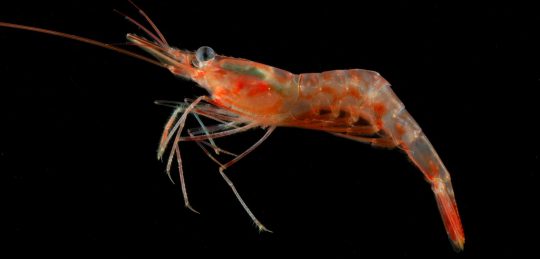
The Shrimp-ly Wonderful Northern Shrimp
A common sight in grocery stores worldwide, Pandalus borealis is known by many names, including the northern shrimp, the pink shrimp, the deep-sea prawn, and the coldwater prawn. In fact, the species is not a prawn but a shrimp; the difference is that shrimp have one pair of legs ending in claws while prawns have three pairs. P. borealis can be found along muddy ocean floors throughout the northern Atlantic and Pacific-- though some regard the two populations as being separate species. Within this range, they typically inhabit cold waters, from -1 °C to 6 °C (30 °F to 43 °F).
As the name implies, pink shrimp are bright pink or red in color, though parts of their bodies are somewhat translucent. Males are smaller than females, at only 12 cm (4.7 in) to their 16 cm (6 in) in length. As a decapod, they have ten legs; the first three pairs, called the maxillipeds are used as mouth parts, while the rest are adapted for swimming. The abdomen is divided into six segments, while the head and the thorax are fused together and protected by a thick shell known as the carapace. P. borealis’ eyes are compound eyes, like those of an insect, and are excellent at detecting movement in the dim light of the deep ocean. Additionally, their long antennae allow it to smell and taste chemicals in the water, assessing the location and suitability of prey.
The coldwater prawn lives in large schools of up to several hundred, though they have no set social structure and do not defend territories. They spend most of their time on the ocean floor, feeding on plankton and carrion. In the coldest parts of the Arctic, this makes them important members of the food web as they can recycle nutrients back into the system. In addition to widespread human predation, a number of octopi, seals, and fish are known to feed on the pink shrimp where available.
P. borealis breeds once a year, from July to September. Males release pheromones as they approach females to signal they are ready to breed, and afterwards the female will carry the stored sperm for up to eight months before fertilizing her eggs. In spring, while the water is still cold, egg-carrying females will migrate close to shore and lay their eggs-- up to 5,000 in a single clutch. The hatched larvae are all male, though they will go through six molts over the course of a year before migrating back to deeper waters and becoming sexually active. They will remain reproductive males for only about a year before molting again and transitioning to female; this is a type of hermaphroditism known as protandry. Individuals will spend the rest of their lives-- typically about eight years-- as a female.
Conservation status: Though they have not been evaluated by the IUCN, the pink shrimp is considered severely overfished in many parts of its native range. Trawling in particular poses a serious threat, as parts of a school not caught will still become stressed and die before reaching maturity. Ocean warming has also damaged populations, since this species thrives only in cold water.
If you like what I do, consider leaving a tip or buying me a ko-fi!
Photos
David Shale
Greenland Institute of Natural Resources
Erling Svenson
#northern shrimp#pink shrimp#Decapoda#Pandalidae#pandalid shrimp#true shrimp#shrimp#decapods#crustaceans#Arthropods#marine fauna#marine arthropods#benthic fauna#benthic arthropods#deep sea#deep sea arthropods#atlantic ocean#Pacific Ocean#animal facts#biology#zoology#queer animals#queer fauna
188 notes
·
View notes
Text
I want to write a longform Regulus POV fic
26 notes
·
View notes
Text


#animal polls#polls#poll blog#my polls#tumblr polls#animals#invertiblr#invertebrates#prawns#shrimp#spot prawn
11 notes
·
View notes
Text
Marauders ship warrrr
My answer is wolfstar and marylily.
#ship wars#atyd marauders#jegulus#jily#wolfstar#nobleflower#rosekiller#quillkiller#dorlene#marylene#pandalily#atyd#ao3#my polls#polls#tournament poll
35 notes
·
View notes
Text
Shrimp of the Day #1
Pandalus montagui
also known as the pink shrimp, aesop shrimp, and aesop prawn


#shrimp of the day#shrimp#pink shrimp#aesop shrimp#aesop prawn#saltwater shrimps#I was planning on adding some fun facts to the bottom but I’ve got a bit too much on my schedule right now to do much research
6 notes
·
View notes
Text
TFW you want to get information about the “sweet shrimp” species after finding out about it in Animal Crossing and how it’ll change its sex to female once it’s older and wanting to learn more about this, only for all the results on top to be about COOKING sweet shrimp and photos of sweet shrimp related food.
Why.
Edit: finally found it on Wikipedia and thus was able to get the scientific name for it, which is Pandalus borealis. Specifically look up that scientific name to get results about the actual animal and not it as food!
1 note
·
View note
Text
In rural Andhra Pradesh, bullock cart race events become crowd pullers on Sankranti | Visakhapatnam News
In rural Andhra Pradesh, bullock cart race events become crowd pullers on Sankranti | Visakhapatnam News
VISAKHAPATNAM: The traditional bullock cart race events have turned into tourist attractions in the rural pockets in Andhra Pradesh during the festival of Sankranti.Like Moi Chara (bull race), a centuries old tradition in the villages of the South 24 Parganas in West Bengal during the monsoon, Yedla Bandi Pandalu (bullock cart race) in the rural pockets of Andhra Pradesh during the Sankranti and…

View On WordPress
0 notes
Photo


Pandalus the Seawing
4/100 on my Hybrid chart :)
Still got 96 more to go tho TT-TT
#wings of fire#wof#seawing#seawing wings of fire#Pandalus#Pandalus the Seawing#Catis#Catis16#2022#Wof Hybrid chart#100 wof hybird challenge
1 note
·
View note
Photo

Orange you glad you met this Pandalus gurneyi shrimp bobbing on a sponge?
They're one of the more common shrimp to be found on local Monterey Bay reefs. They live about 3 years or so, starting out as males and becoming females later on in life, a shrimpressive feat that maximizes the success of their brood of smol shromps.
#monterey bay aquarium#SHROMPweek#shrimp#shromp#scandalous Pandalus#a very shrimpressive smol friend
553 notes
·
View notes
Video
youtube
Seniors Bull Race Winner RR Rohan Babu Garu J Puram | Edla pandalu in An...
0 notes
Photo


めちゃくちゃ食べるエビだけど、めちゃくちゃ麗しいのね
@おたる水族館
29 notes
·
View notes
Video
Panda Lu Baby Bear World Pet Care Games – Play Dress Up & Feed Panda – Fun Baby Game for Kids
#youtube#happykidsgames#gamesforkids#kidsgames#takecare#caregame#panda#pandalu#petcaregame#dressupgame#funbabygame#educationalgame#forkids#icecream#children#animalcare
1 note
·
View note
Text

Tonight's readymade delight! 🍽️
Some potato-topped fish pie, with a shrimp and dill sauce. Also another incidentally gluten free option!

("QUALITY SHOULD NOT COST MORE")
That ran just about £2/$2.75 for reference, and we'll see about that! The ingredients looked fairly promising, though.

(Via autotranslated OCR, because wording spoons: "INGREDIENTS: POTATO MASH 44%: Skimmed milk powder, mashed potatoes powder (sulphite), vegetable margarine (vegetable oil (rapeseed oil), water, emulsifier E 471 (veg), E 322, salt, antioxidant E 330, flavors), salt, pepper extract. FISH 30%: Clean-cut fillets of Alaska pollock * (Theragra chalcogramma). SAUCE 26%: Crème Fraiche (highly pasteurized cream, milk protein, modified corn starch, stabilizer E 440, E 410, lactic acid culture), water, cooking cream (whey powder (from milk) buttermilk powder (vegetable powder, margarine oil, vegetable oil) water, emulsifier E 471 (veg), E 322, salt, antioxidant E 330, flavors), shrimp 1.4% (Pandalus borealis), Alaska pollock * 1.4% (Theragra chalcogramma), modified corn starch, onion, salt, tomato puree, dill 0.3%, shrimp aroma. CATCH AREA: * Pacific Ocean (FAO 67). ** Northwest Atlantic (FAO 21) Catch method: Fished with trawl.")
Since I already had the oven fired (electriced?) up to toast some oats, and I had enough time before I wanted to eat? I just went ahead and popped the frozen delight in there too, for the whole suggested time--plus a little more, with the usual underestimation on the package. 🙄 Generally, I would nuke it until it's basically done, then shove it into the oven for a few minutes to brown if I felt like it.
Also as usual for a casserole like that, I covered the pan with slightly tented foil for most of the cooking to keep the top from drying out too much. Uncovering to let it brown the last 10-15 minutes was plenty.

Yep, that's a lot of aluminum foil! But, I can easily reuse anything that didn't get covered in food, and totally plan on it. ¯\_(ツ)_/¯
The little foil bundles at the back are garlic bulbs I couldn't resist also popping in to roast. He bought a pretty big pack of garlic to use when he was starting up another jar of brine pickles earlier in the week. (Sour cucumbers this time, after he saw some small variety that looked good for that in our local grocery store.) Shame to maybe let any of that extra go to waste! 😁 Plus, you know, roasted garlic.

Besides butter and a jar of coconut oil which is hiding in a box somewhere, we still only have a couple of little bottles of extra virgin olive oil intended for salads and the like. So, I ended up drizzling a little of that on. ¯\_(ツ)_/¯
One of them is chili infused, so I used some of that on one head of garlic, because why not. To hopefully tell them apart at the end, one got sprinkled with coarse black pepper, while the other got a tad of Creole seasoning because it was there.(Yep, no salt and pepper grinders have turned up unpacking yet! 🙃)
Not that there was much visual difference at the end anyway. You could just about make out bigger specks on one, but hey.

They ended up tasting about the same too, when I couldn't help but try one of each with the rest of the food.

Yum! 😋
Not surprised, with no more oil than it needed. Very tasty, regardless! He sampled some too, and now I'm planning to stash the rest in the fridge for later. Well sealed up.
As for the main attraction?

More of my usual awesome presentation, with the last little bit of garlic cream cheese spinach on the side. And some extra sprinkling pepper standing by. Plus about 2 pint glasses of water to wash it all down, just to be safe! 🙄
About as tasty as I'd been hoping, as it turned out. Just a hint of shrimp flavor, which wasn't too surprising given the percentage. These Swedes really know what they're doing with the dill and cream, though.
Playing it safe, I started out with half the single serving tray--and feel like I'm about to burst now! Still working off a pretty low capacity for Actual Food, much less a bunch of potatoes and fish in a rich cream sauce.
Originally thinking to save the rest for later, but it apparently smelled delicious enough to Mr. C that he came in to scavenge the other half like a starving creature himself. Which was fine. I didn't think he'd want the shrimp content in particular, but next time I'll know to pick up one for each of us!
Now to figure out what to have instead later, with all the more feasible choices available now.
Definitely not bad for the price! 9.5/10 would try again even when less malnourished and in immediate need of the energy. 😁
#long post#food#staying fed#swedish food#fiskgratäng#fish#potatoes#spinach#leftovers#gluten free#swallowing bs#esophageal stricture#malnutrition
10 notes
·
View notes
Photo

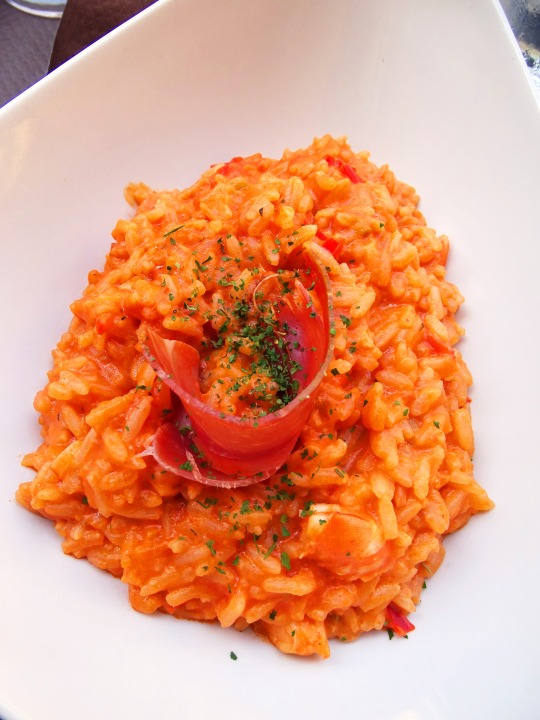
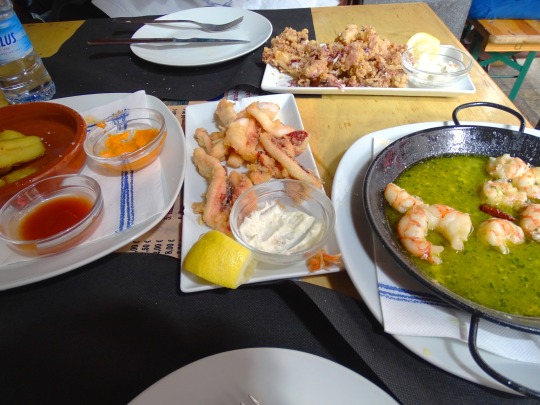


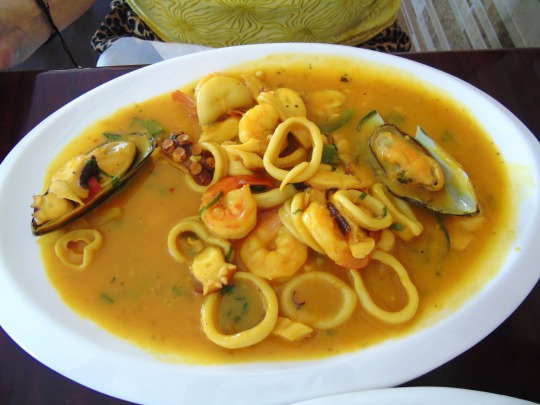
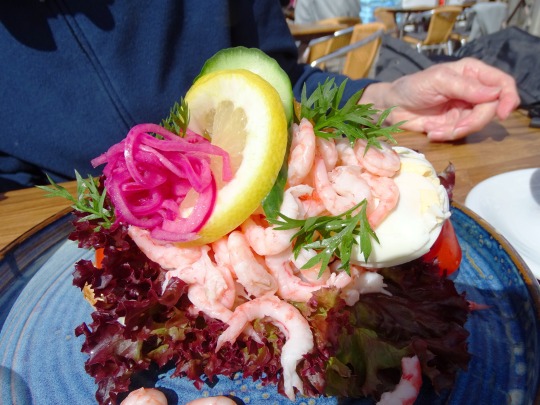


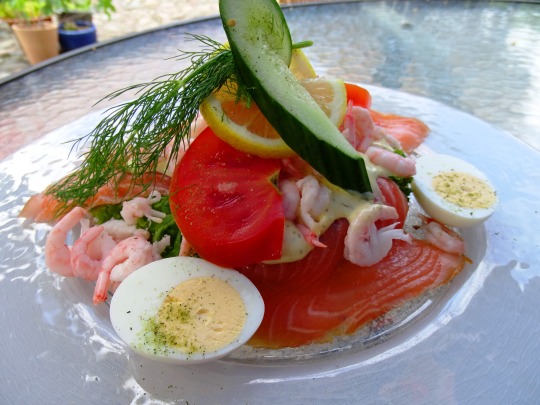
National Shrimp Day
Epicures, chefs, suppliers, associations, restaurants, and others celebrate shrimp today, the most widely eaten crustacean in the United States. As part of the day, videos and recipes are shared, contests are organized, specials are offered, and shrimp are eaten.
There are many species of shrimp. Some large shrimp are known as prawns. Coldwater shrimp, known as pandalid shrimp, are small shrimp found in the ocean waters in the northeast and northwest regions of the United States and Canada. One of these is the Pandalus borealis, a pink-hued shrimp used in chowders, soups, and salads. Warm water shrimp are found in tropical and subtropical regions around the world. These include white, brown, and pink shrimp, as well as hopper, tiger, and banana shrimp. These shrimp vary in size, taste, texture, and cost.
Wild shrimp, classified as either warm water or cold water shrimp, are caught in coastal ocean waters. These shrimp are well regulated, and make up less than ten percent of the shrimp consumed in the United States. Wild shrimp caught on the coasts of the United States are known as domestic shrimp. Farmed shrimp are warm water shrimp that are grown in open and closed pond systems and given formulated feeds. Over ninety percent of the shrimp eaten in the United States are farmed shrimp raised in other parts of the world. Imported shrimp usually means farmed shrimp that come from either Asia or the Pacific and Gulf coasts of Central America and South America.
Shrimp may be purchased refrigerated or frozen, the latter being the most common. They may be purchased whole or peeled, headless, tailless, and deveined. They are usually sold by weight and are categorized into sizes: jumbo, extra-large, large, medium, and small. Shrimp provide lean protein, are low in fat, and contain iron, vitamin B12, choline, selenium, and omega-3s. Their nutrients benefit the heart, boost immunity, and fight inflammation. Although, they do contain more sodium and cholesterol than other seafood.
Shrimp are versatile and can be eaten raw or cooked. They can be canned, smoked, or pickled, and can be deep-fried, pan-fried, skillet-fried, boiled, grilled, barbequed, or baked. They can be breaded or left plain. They can be made with rice and can be used in soups, chowders, and salads. Coconut shrimp, jambalaya, gumbo, scampi, poon choi, and okonomiyaki are some common dishes shrimp are used in. Cacciucco, paella de marisco, and caldeirada are European dishes where shrimp can be found. Shrimp curry is common in Asia. On National Shrimp Day, we celebrate all types of shrimp and all the dishes that can be made with them.
How to Observe National Shrimp Day
Some ways you could observe the day include:
Make a dish that contains shrimp.
Catch some shrimp.
Keep an eye out for contests being organized, shrimp videos and recipes being shared, and restaurants offering specials.
Host a shrimp party. You could ask everyone who attends to bring a dish that contains shrimp.
Source
#sweet shrimp rice#garlic shrimp#Salmon & Shrimps Smørrebrød#Spain#USA#Sweden#food#restaurant#original photography#travel#vacation#tourism#seafood#Shrimp Sandwich#Shrimp and grits#egg roll#Canada#Cau Cau de Maricos#Sverige#España#Portugal#tapas#appetizer#entrée#National Shrimp Day#NationalShrimpDay#10 May
3 notes
·
View notes
Text
Shrimp of the Day #7
Pandalus platyceros
also known as the california spot prawn, santa barbra spot prawn, montery bay spot prawn, and alaskan prawn
#shrimp#Shrimp of the Day#california spot prawn#saltwater shrimps#monterey bay spot prawn#santa barbara spot prawn#Alaskan prawn
3 notes
·
View notes